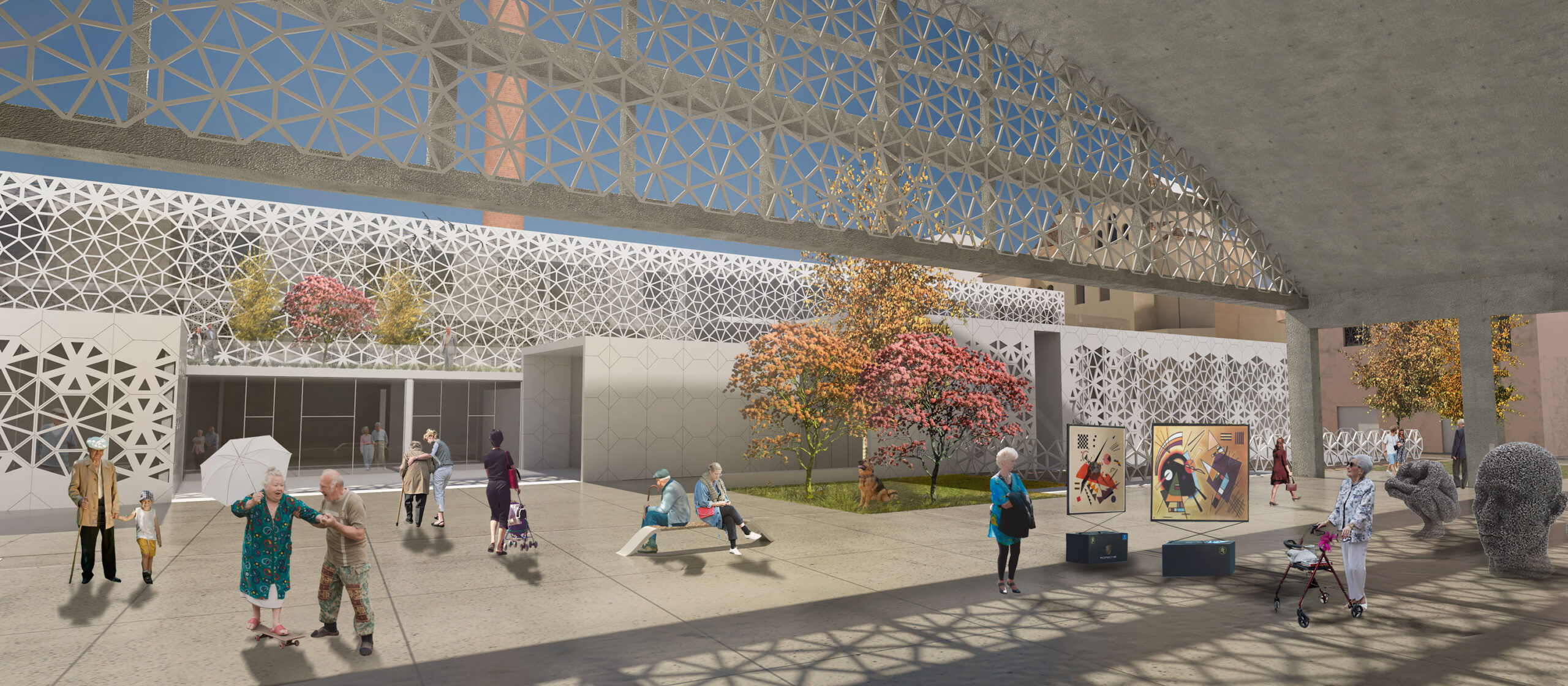Architect: Gloria Vega Martín | Year: 2015
Socio-health Center (final degree project)
Summary
In a sector of great historical heritage, a social-health center for the elderly is created, focused on improving the quality of life of the user.
It provides an answer at a programmatic, social and urban level. At the urban level, connecting the plot from north to south and with the rest of the neighborhood, at the social level it generates activities that revitalize the neighborhood and at the functional level it fulfills all the requirements of a geriatric residential center, giving it a more domestic and human character.
The Project
It is located in the neighborhood of La Goleta, currently in great physical and social deterioration. It is an area lacking in public spaces and energizing equipment, but with an enviable location next to the city center.
The plot has a continuous functional evolution, where numerous public events took place with an itinerant character such as religious processions, medicinal baths, summer cinema…
From all this activity we inherited numerous preexistences, witnesses of the passage of time.
I decided not only to preserve the architectural elements, but also to enhance their value by involving the neighborhood.
The strategy is carried out at the urban and functional level.
The urban revitalization, through the creation of a public street through the plot, being this a cultural route in itself, since the layout is accompanied by each of the historical permanences (the elevation of the Maria Cristina hall, the concrete nave, the pavilion and the neoclassical facade). I recover the flexible character of social events that has conditioned the site for years, creating a large covered square under the vaulted concrete nave, a place of community exchange where various social, cultural and sporting activities will take place, with the side elevation of the Maria Cristina hall as a backdrop.
The functional revitalization is generated with a new concept of geriatric residential center, it will be a social-health center, like a small city, where, from the knowledge of the user, spaces for stimulation are created to improve their quality of life and slow their cognitive decline.
It is distributed programmatically following a transversal axis of privacy that goes from the vaulted nave to the party wall, going from the most public to the most private. It is organized in different bands that integrate shared public uses such as a medical rehabilitation center specializing in hydrotherapy and a training center where labor therapy and information sessions can be held… In addition to a cafeteria, stores and the square, thus regenerating the flows of activity in the area currently limited to the perimeter of the neighborhood.
Following this axis of privacy, vegetation gradually appears in the form of patios and terraces that adapt their dimensions to the internal functionality, making the relationship with nature much more intimate in the more private areas.
The spaces undergo a compression dilation where the height between floors of the volumes varies according to the type of activity, being greater in those closest to the public square.
A continuous relationship between rooms is generated thanks to the interior permeability that enhances the axis of privacy and generates a diffuse boundary between inside and outside.
The main objective of the project is to give an image where the citizen feels in his place, to recognize the place as his own home and not contemplate it as a medical institution, but as a residential center. To do this I eliminate the concept of corridor that would simply be an element of passage and create an INTERNAL STREET that is the one that gives access to the different residential units. On the second floor are located the rooms for dependent people and on the second floor, residential units for semi-dependent people.
This enhances the image of the neighborhood and once again maintains the diffuse boundary between inside and outside.
The creation of this street is a therapeutic intervention in itself.
With it a SENSORY STIMULATION is performed, since through the lattice that covers the volume, you can feel the noises of the street, the birds, the breeze, the temperature… helping in turn to TEMPORAL ORIENTATION.
With the creation of the entrance vestibules, Spatial Orientation is worked as they have a customizable character that makes them a recognizable reference for users.
Due to their dimensions, they generate more domestic relations between neighbors and with the environment.





